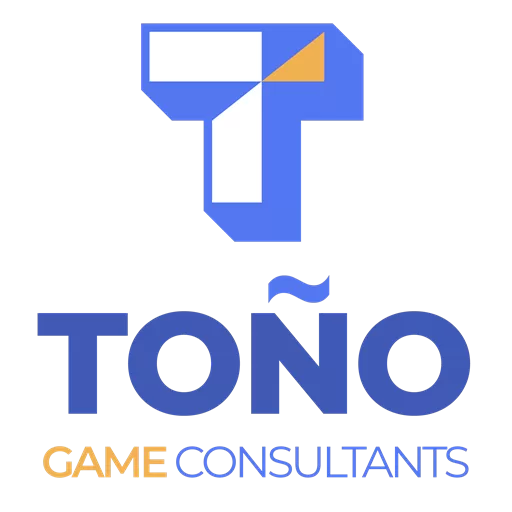“Scrum is not easy.”
At first glance, Scrum looks straightforward: sprints, stand-ups, reviews, and retrospectives. Many teams assume they can adopt it overnight and instantly become more efficient. But game development is messy, unpredictable, and chaotic, and Scrum done wrong often leaves teams frustrated, blaming the framework instead of their implementation.
Done right, though? Scrum is one of the only frameworks that can consistently predict how much time and effort a game project will take. After nearly 20 years as a programmer, I can say that I know Scrum well enough to consistently predict project timelines with a level of accuracy I’ve never seen from any other framework. Nothing else I’ve used before or since has matched that clarity.
Misconceptions About Scrum in Games
One of the most common misconceptions I’ve heard is that Scrum wastes developer time, with people claiming 20–25% of the schedule goes into meetings. That’s simply not true. I’ve measured it: when Scrum is applied effectively, ceremonies take 8% or less of developer time.
The real issue isn’t that Scrum takes too much time, it’s that it looks deceptively simple. Some managers or outsiders see a few Scrum rituals in action, notice positive results, and decide to adopt them. But without understanding how those rituals fit into the overall framework, they create a poorly managed process. This is what’s often called cargo cult, copying the surface practices without the underlying discipline, and it almost always leads to frustration and failure.
Scrum Across Disciplines in Game Development
Programming
For programmers, Scrum provides focus. Instead of being pulled in ten different directions, developers work on a defined sprint backlog and deliver consistent value toward the game’s goals. It keeps progress visible and achievable.
Game Design
Scrum doesn’t make game design less chaotic, design is inherently experimental. But designers (or managers in their absence) must take on the Product Owner role, prioritizing features based on player value and testing outcomes. They define the scope that developers work toward.
Production
Producers often act as the ScrumMaster, facilitating the process, clearing blockers, and ensuring transparency. But if a Producer takes on the Product Owner role instead, then someone else (ideally a technical lead) should serve as ScrumMaster.
Why? Because as I explained in Scrum Master vs Product Owner, it’s a conflict of interest:
-
The Product Owner looks after the well-being of the product.
-
The ScrumMaster looks after the well-being of the team.
Mixing the two usually means the team ends up paying the price, and the product suffers with it.
When Scrum Works, and When It Doesn’t
Scrum shines when applied in its vanilla form by people who understand the framework deeply. Adjustments should only be made by teams with enough experience to know why each piece exists.
I’ve seen firsthand how powerful this can be. At a past company, management expected delivery within 1–1.5 months. By measuring sprint velocity with Scrum, I could show that the actual effort required was closer to 8 months (on top of 2 already spent). The prediction was accurate, and within the expected range. That level of forecasting simply wasn’t possible without Scrum.
On the flip side, I’ve also seen teams fall into the death spiral: sprint after sprint with nothing to show, because they skipped fundamentals or altered the framework without understanding it.
Is Your Team Really Set Up for Scrum Success?
Scrum isn’t easy — and many teams don’t realize where their process is breaking down until it’s too late. Take the Game Production Health Quiz to see how your current practices stack up and where you can improve.
Benefits Scrum Brings to Game Development
When applied correctly, Scrum directly addresses some of game development’s biggest challenges:
-
Scope creep: Scrum helps teams prevent uncontrolled expansion by making trade-offs explicit.
-
Realistic forecasting: Scrum makes the cost of adding new features clear, tying back to the triple constraint.
-
Vertical slice readiness: Scrum becomes especially valuable once your team begins building a vertical slice. This is often the first true piece of production the team encounters, where experiments turn into something concrete. From this point on, Scrum provides the structure to iterate effectively and keep progress visible.
-
Player value focus: Designers and Product Owners prioritize features based on playtesting feedback, aligning scope with what players actually enjoy.
- Cross-platform and mobile alignment: Mobile game development comes with unique challenges, shorter sprint cycles, device fragmentation, and live operations demands. Scrum helps teams adapt quickly, test monetization features responsibly, and deliver updates without burning out the team.
Scrum doesn’t remove the chaos from game development, but it makes that chaos manageable.
Conclusion: Scrum is Hard, But Worth It
Scrum is often dismissed as snake oil or meeting overload. But the truth is simpler: Scrum is not easy. It requires discipline, clarity, and an understanding of why each part of the framework exists.
When applied correctly, it transforms game development from endless uncertainty into predictable, sustainable progress. And for teams struggling with missed deadlines, scope creep, or wasted sprints, Scrum might be the only thing that brings order to the chaos.
Want to see how Scrum can actually work for your game? Learn more about how I help teams implement production frameworks that fit their projects.
FAQ: Scrum in Game Development
Does Scrum take too much time in meetings?
Not when it’s run well. Ceremonies typically take ~8% or less of developer time. If it feels heavier, it’s usually a facilitation issue (unclear goals, bloated attendance, or status-report culture) rather than Scrum itself.
Are sprints too rigid for creative work like art or narrative?
Scrum isn’t one-size-fits-all. Programming and systems design benefit most from sprint cadence and iterative planning. Art and asset pipelines, on the other hand, often work better with a more predictive flow (stage gates, hand-offs). QA and stabilization teams usually thrive under Kanban, since their work is more reactive. My recommendation is to tailor your framework by discipline, for example, using Scrum for code/design, a waterfall-style pipeline for assets, and Kanban for stabilization. See waterfall vs. Scrum vs. Kanban.
We tried Scrum and it “didn’t work.” Why does that happen so often?
The most common failure mode is cargo-cult, copying rituals without understanding how they fit together (standups as status reports, planning without a real backlog, retros with no actions). That’s process theater, not Scrum. More on this in cargo cult practices.
Who should be the Product Owner in a game team?
Typically the lead game designer, creative director, or a manager of the game, whoever is best placed to prioritize player value. They should not also be the ScrumMaster; the ScrumMaster protects the team’s process and health. Mixing the roles usually means the team pays the price, and the product suffers. See Scrum Master vs Product Owner.
Can Scrum really help with estimation and predictability?
Yes, when you keep a clean backlog, measure velocity honestly, and avoid scope thrash. It’s one of the few frameworks that lets teams forecast reliably over time. If your estimates keep slipping, revisit breakdown/estimation practices and read time estimation traps.
When should a game team start using Scrum?
Scrum becomes especially valuable as soon as you enter production and begin building a playable vertical slice. Before that, pre-production is highly exploratory; keep process lightweight and focus on playtesting and discovery. Once production starts, Scrum gives you cadence, clarity, and visible progress. See vertical slice.
How big can a Scrum team be? Does it scale?
Scrum teams work best with 10 or fewer members. Beyond that, communication complexity grows exponentially, making it harder to keep everyone aligned. To handle larger teams, organizations often adopt scaling models such as Scrum@Scale (S@S), Large Scale Scrum (LeSS), Scrum Agile Framework (SAFe), or Fluid Agile Scaling Technology (FAST).
What is Game@Scale?
Game@Scale is an in-house framework I created, adapted from Scrum@Scale for the realities of game development. It helps programming, design, art, and QA each use the workflow that fits them best while keeping all teams aligned under one production framework.
Isn’t Scrum just glorified to-do lists and micromanagement?
Misused, it can feel that way, especially if metrics (points/velocity) are weaponized or standups turn into status reports to a manager. Proper Scrum is team-led, outcome-focused, and designed to surface risks early, reduce scope creep, and make trade-offs explicit (see the triple constraint).
What about hard R&D tasks that don’t fit neatly in sprints?
Use spikes (time-boxed research) where “done” means a decision or prototype, not code. For reactive work, Kanban is often better. This is also where my in-house framework, Game@Scale, helps, letting R&D and other disciplines use the workflow that fits them while staying aligned with the whole team.
How do we keep Scrum from devolving into “meeting hell”?
Keep ceremonies time-boxed, attendees purposeful, and outcomes concrete (a prioritized sprint backlog, visible impediments, and 1–3 retro action items). If a meeting doesn’t change a plan, surface a risk, or create alignment, shrink it or cut it.
Can Scrum be used for mobile game development?
Yes. Mobile projects often face unpredictable requirements, new OS versions, device fragmentation, and fast iteration cycles. Scrum’s sprint cadence and focus on delivering incremental value make it effective for mobile game teams managing constant change.
How does Scrum help reduce crunch in mobile game projects?
By making trade-offs explicit each sprint, Scrum helps teams avoid unrealistic last-minute pushes, even when dealing with platform updates or app-store deadlines.


